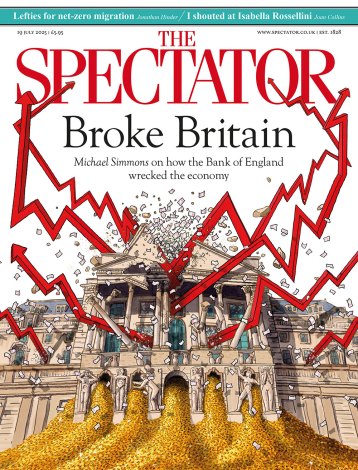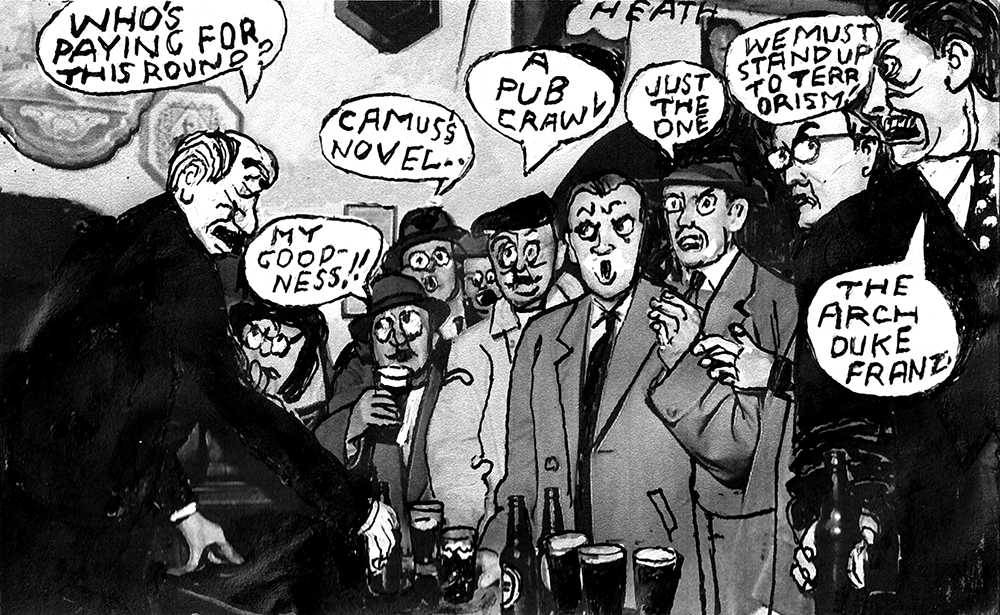
I have never seen a baked Alaska in the wild. Have you? I knew what they looked like, of course, all meringue cheekbones and technicolor interior, but I haven’t actually come across one. For whatever reason, they seem to be an endangered species – so I took to making them myself.
The pudding was invented in the 18th century by Sir Benjamin Thompson (also known as Count von Rumford), a physicist who invented the double boiler, the modern kitchen range and thermal underwear too. Thompson realised that the tiny bubbles created when you aerate egg whites to make meringue provided so much insulation that you could torch the meringue and leave ice cream intact, unmelted, beneath.
But the name came later: in 1876, New York restaurant Delmonico’s chef Charles Ranhofer made a version of the pudding to celebrate the US’s acquisition of Alaska, and named it ‘Alaska, Florida’, a nod to the hot-cold contrast of the pudding and states. It quickly became known as baked Alaska. Ranhofer’s baked Alaska was made up of banana ice cream, walnut spice cake and toasted meringue, and commanded a hefty price tag – the equivalent of £30 today.
I read a recipe for baked Alaska recently which described it as ‘deceptively simple’, which made me laugh out loud. Let me be clear: baked Alaska is not simple, deceptively or otherwise. It’s a project. Granted, nothing that baked Alaska requires of you is particularly difficult, and it can be broken down into stages – I make mine across three days, fitting it in around real life – but let’s not pretend that a pudding that requires a meringue, a baked cake, moulded ice cream and actual fire is simple.
What it is, though, is gobsmacking. The archetypal showstopper. From the outside, carried to the table, it’s all swirls and spikes, the textures emphasised and enhanced by the toasting, like beautiful, edible anaglypta. It’s irresistible, standing tall and proud. And then, once cut through, the different colours resemble layers of the earth, or a geode. When completed, it feels like you have defied various laws of physics.
Traditionally, there are a couple of ways to toast the meringue. You can put it in a very hot oven, or under an equally hot grill, but these will brown unevenly and therefore risk melting the ice cream as you turn it. And if your grill is anything like mine, you can’t fit anything deeper than cheese on toast under it anyway. For the ‘bombe Alaska’ variation of the pudding, the meringue is toasted by tipping flaming high-proof alcohol over the whole thing, all done table-side. I cannot bring myself to do this: the prospect of a pale, soggy, boozy meringue that you’ve spent three days erecting is simply too heartbreaking. So instead, you do need a little cook’s blowtorch to toast the meringue. They’re cheap and easily available in shops.
This baked Alaska is based on a neapolitan ice cream, with a dark chocolate brownie base, dotted with chopped walnuts, a pastel pink strawberry ice-cream centre, and topped with a toasted vanilla-flecked meringue. It’s a riot of colour and flavour.
It’s all swirls and spikes, the textures enhanced by the toasting, like beautiful, edible anaglypta
You can, of course, further complicate matters. More layers. More flavours. More texture. Swirl compotes or curds through the ice cream; experiment with different cake bases, or use a disc of Christmas pudding. Pistachio ice cream or mint chocolate chip will create a fantastic green reveal; you can use multiple layers of different flavours of ice cream to create a gobstopper effect.
The pudding overall is a very sweet one, so I like to introduce touches of bitterness: finely chopped marmalade in vanilla ice cream, or using a good, strong coffee ice cream to cut through the meringue. Try sour-cherry ice cream and almond sponge, rhubarb-rippled ice cream and cardamom-spiced meringue: flavour combinations which echo Black Forest gâteau or tiramisu, pina coladas or sherry trifle. Baked Alaska is inherently a very silly pudding, so have fun!
Serves 10
Prep 45 mins
Cooks 20 mins
For the brownie
- 125g salted butter
- 125g dark chocolate
- 1 egg
- 1 egg yolk
- 100g caster sugar
- 25g dark brown sugar
- 45g plain flour
- ½ tsp fine salt
- 50g walnuts, chopped
For the meringue
- 140g egg whites
- 250g sugar
- ½ tsp cream of tartar
1 litre strawberry ice cream
- Line a medium-sized bowl with two layers of clingfilm. Add the ice cream, pressing it down with a spoon. Cover with the clingfilm and freeze for at least two hours.
- To make the brownie, line a 20cm square tin and heat the oven to 170°C/160°C fan. Melt together the chocolate and butter over a bain marie. Whisk both sugars, egg and egg yolk until pale and increased in volume. Pour the melted chocolate and butter into the eggs and sugar, and combine. Fold in the flour and salt, followed by the walnuts. Pour into the tin and bake for 25 minutes, then leave to cool.
- Trim the cooled brownie so that it is a circle the same size as the base of your ice cream bowl.
- Make the meringue by whisking the egg whites and cream of tartar slowly until the first bubbles appear, then fast, until the egg forms stiff peaks. Add the sugar one tablespoon at a time, beating each in thoroughly.
- Place the brownie on a serving plate. Turn out the ice cream on top of it, then cover the whole thing with meringue. Tease the meringue with a spoon or skewer to create swirls and peaks. Carefully toast the whole of the meringue with the cook’s blowtorch. Serve immediately.








Comments